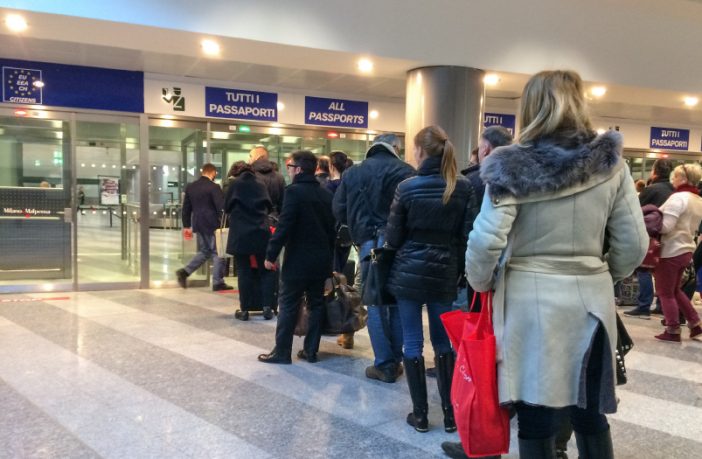Most Americans are aghast when they hear that the government does not know how many foreigners or who is staying illegally in the country after entering with a visa. The government knows who is entering – that’s what those lines at the airport’s passport control are doing. But there is no similar collection of reliable data on departing travelers that allows the exit data to be compared with the entry data to identify those staying beyond their authorized stay.
Although this fact is not generally known to the public, it is known to Congress. When Congress enacted a package of reforms in 1996 (Illegal Immigration Reform and Immigrant Responsibility Act ) as urged by the findings of the U.S. Commission on Immigration Reform, the Clinton administration was instructed to develop a system for collecting the departure information in a way that could be reliably compared to entry data so that policy makers would learn the magnitude of the overstay problem and the profile of the overstayers in terms of type of visa, country of origin, and biometric data. The idea was that if visa entry scofflaws were concentrated among a group such as young single persons entering with a temporary work visa or a student visa and from a particular country, the visa issuance process in that country could be tightened up. Similarly, if it were found that a disproportionate number of scofflaws had been issued a visa by a specific consular officer, that consular officer could be counseled to tighten issuance standards.
But, aside from a few tentative steps to explore the means to capture reliable exit data, no progress was made in complying with the mandate from Congress.
A new impetus was generated by the September 11, 2001 terrorist attacks on our country. It was revealed that five of the 19 terrorists on the hijacked planes were visa overstayers and that shoddy visa issuance procedures in Saudi Arabia had enabled that attack. With heightened concern for national security, Congress again mandated action in the 2004 Intelligence Reform and Terrorism Prevention Act. It again ordered the newly created Department of Homeland Security (DHS) to implement an automated biometric entry-exit matching system.
But, more than a dozen years later, it still has not been accomplished. One notable setback occurred when airlines refused to accept any responsibility for doing anything other than scanning machine-readable passports at their reservation desks in airports. This left the loophole that the traveler might not be the same person to whom the passport was issued. DHS currently is again attempting to enlist airlines to cooperate with it in the exit data collection.
Congress has continued to be apprised of the failure to fulfill the mandate it gave the administration in reports from the Government Accountability Office, other reports and in testimony. A further prodding from Congress came in the Budget Act of 2016 when DHS was given earmarked funding for a pilot project to collect the biometric exit data.
It is not that DHS has been entirely ignoring the law. It has executed a series of narrowly-focused tests that have accomplished better understanding of the difficulty in collecting reliable data. And, DHS now reports that it is readying a partial data collection system for departing travelers by next year. However, reviewing the string of failures since 1996, it is premature to be hopeful. DHS also delivered its first report to Congress on what it believed was the number of foreign travelers who failed to depart by the end of their authorized stay during fiscal year 2015 in two categories – travelers for business and pleasure (i.e. tourism), Those visa categories account for a large majority of arriving foreigners, but not necessarily the most likely to overstay their admission period. That report identified 527,127 potential scofflaws. That calculation, however, is not definitive, and it is only partial, but it demonstrates that the issue is substantial.
Anyone wanting more on the history of this national security flaw and current efforts underway by DHS to comply with the law will find it in the latest report of the GAO (February, 2017) here.





2 Comments
Yes, We Give Out VISAs Like Candy
The lottery VISAs make it a carnival game…
At any given time,
there are about 2 million visitors with visas in the USA.
Each visa was carefully issued and recorded by the State Department.
Sometimes foreign visitors must wait several months
for the process to be completed.
But once inside the USA,
there is no tracking system for such visa holders.
We have up-to-the-minute electronic tracking of packages
somewhere in the process of being deliverer.
Perhaps a similar system could be developed
for keeping track of foreign visitors.
Should they be required to report their locations
with some reasonable frequency?
Directory USA would be the most logical place
to keep track of all foreign nationals:
http://www.tc.umn.edu/~parkx032/CY-NID.html